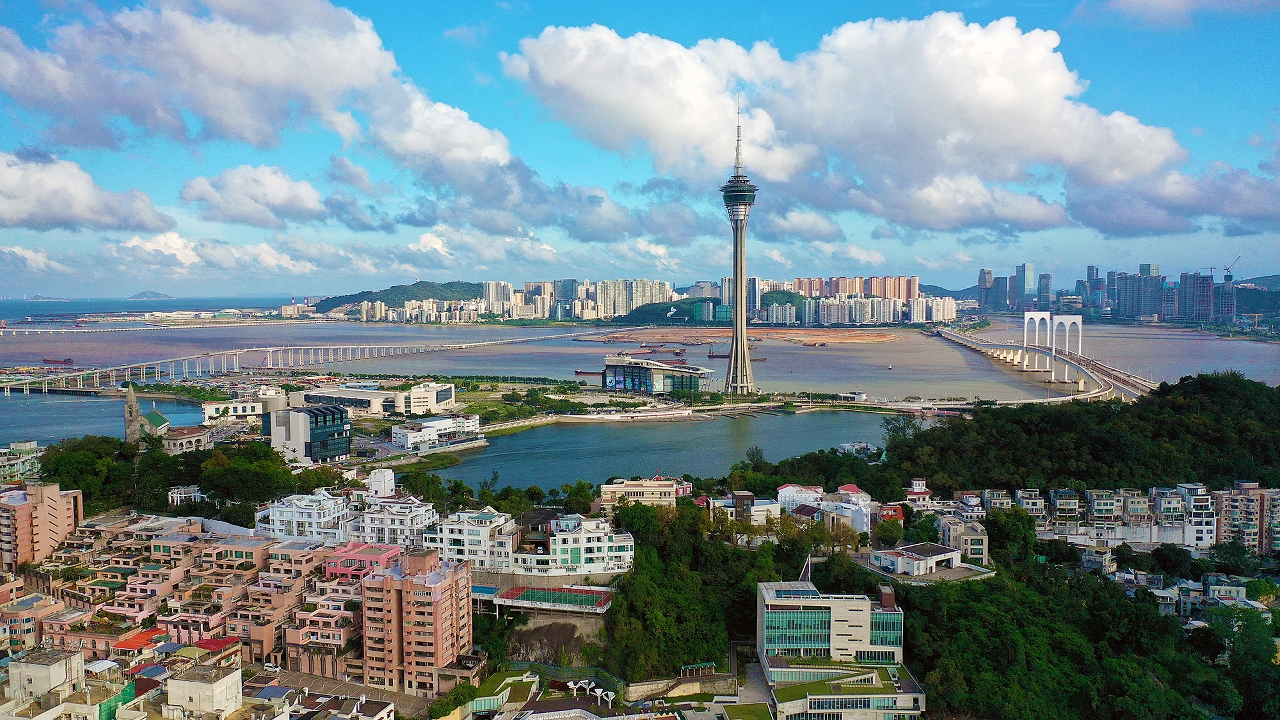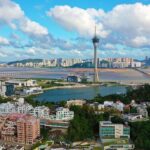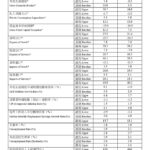 UM releases the Macroeconomic Forecast for Macao 2024
UM releases the Macroeconomic Forecast for Macao 2024
The Centre for Macau Studies and the Department of Economics of the University of Macau (UM) have released the Macroeconomic Forecast for Macao 2024, according to which Macao’s economic growth in 2024 will be between 8.3% and 21.0%, growth in exports of services will be between 10.3% and 26.7%, and the final revenue of the Macao SAR Government will remain between approximately MOP 95.3 billion and MOP 109.6 billion.
Based on the fact that visitors from mainland China are still the main factor affecting the development of Macao’s economy, and based on the assumption that there is no major public health impact on Macao’s normal social operations, the research team considered two possibilities for mainland visitor arrivals: in Scenario 1, which is more optimistic, the mainland visitor arrivals in 2024 will return to the level of 2019; in Scenario 2, which is more conservative, the mainland visitor arrivals in 2024 will increase by 5% over 2023. Based on these two scenarios, the research team has made the following forecasts: 1) the baseline forecasts for Gross Domestic Product (GDP) growth are 21.0%, reaching MOP 422.2 billion (96.1% of 2019) (in Scenario 1), and 8.3%, reaching MOP 377.6 billion (85.9% of 2019) (in Scenario 2) respectively (the year-on-year growth rates are expressed in absolute values calculated using the chain volume measures for the year 2021); 2) the baseline forecasts for services export growth are 26.7% (Scenario 1) and 10.3% (Scenario 2) respectively; 3) the overall unemployment rate is projected to be 1.9% (Scenario 1) and 2.1% (Scenario 2) respectively; 4) the unemployment rate of residents is projected to be 2.6% (Scenario 1) and 2.8% (Scenario 2) respectively; and 5) the Macao SAR Government’s recurring revenue is projected to be MOP 109.6 billion (Scenario 1) and MOP 95.3 billion (Scenario 2) respectively.
Macao changed its anti-epidemic policy in December 2022 after nearly three years of epidemic prevention and control. Visitor arrivals began to recover in 2023, with Hong Kong visitor arrivals recovering faster, reaching 5.95 million between January and October 2023, which was 97.1% of the same period in 2019. Mainland visitor arrivals reached 15.32 million between January and October 2023, representing 64.4% of the same period in 2019. However, the recovery of visitor arrivals from other regions was slower, with 1.42 million arrivals between January and October 2023, only 40.7% of the same period in 2019. On the back of tourism recovery, the exports of services reached MOP 200.9 billion in the first three quarters of 2023, representing 79.6% of the same period in 2019. However, the exports of gaming services recovered more slowly, and were only MOP 101.1 billion in the first three quarters of 2023, representing 56.1% of the same period in 2019. For domestic demand, both private consumption and investment have recovered well. The private consumption expenditure was MOP 81.8 billion in the first three quarters of 2023, which was 98.2% of the same period in 2019, while the gross fixed capital formation was MOP 35.8 billion in the first three quarters of 2023, which was 79.6% of the same period in 2019. Consumer prices remained stable, with the consumer price inflation rate between January and October 2023 at just 0.9%. The labour market is gradually recovering. While the overall unemployment rate in the third quarter of 2023 was 2.4%, the unemployment rate among local residents was 3.1%. Although these two rates were still higher compared to the figures of 1.8% and 2.5% recorded in the third quarter of 2019, they were significantly lower than the peaks of 4.0% and 5.2% recorded in the third quarter of 2022. Employment earnings have recovered quickly, with a median monthly employment earnings of MOP 18,000 in the third quarter of 2023, which has surpassed the level of MOP 17,000 recorded in the same period in 2019.
According to the October 2023 forecast by the International Monetary Fund, global economic growth will slow from 3.5% in 2022 to 3.0% in 2023 and to 2.9% in 2024. As policy tightening begins to have a negative impact, advanced economies are expected to slow from 2.6% in 2022 to 1.5% in 2023 and to 1.4% in 2024. Emerging market and developing economies are projected to have a modest decline in growth, from 4.1% in 2022 to 4.0% in both 2023 and 2024.
The research team expects that Macao will face uncertainties about the economic development in mainland China in 2024: the contraction of the real estate market, as well as local government and corporate debt will affect residents’ income, leading to a decrease in their interest and purchasing power in travelling to Macao. Therefore, the research team formulated two scenarios: Scenario 1 assumes that the slowdown in mainland China’s economic growth will have less impact on Macao—mainland visitor arrivals will continue to grow at a higher rate and returns to the level of 2019 by 2024. Scenario 2 assumes that the slowdown in mainland China’s economic growth will have a greater impact on Macao— mainland visitor arrivals in 2024 will have a very small growth, only 5% compared to 2023.
Based on the above two scenarios, the forecasts of major economic variables are as follows:
• The baseline forecasts for GDP growth are 21.0% to MOP 422.2 billion (96.1% of 2019 level) (Scenario 1), and 8.3% to MOP 377.6 billion (85.9% of 2019 level) (Scenario 2) respectively.
• The baseline forecasts for growth in the exports of services are 26.7% (Scenario 1), and 10.3% (Scenario 2) respectively.
• The baseline forecasts for growth in private consumption expenditure are 5.3% (Scenario 1), and 5.0% (Scenario 2) respectively.
• The baseline forecasts for growth in gross fixed capital formation are 11.2% (Scenario 1), and 7.2% (Scenario 2) respectively.
• The inflation rate (measured by GDP deflator) is projected to rise by 3.3% (Scenario 1), and 2.4% (Scenario 2) respectively; and consumer price index is projected to increase by 1.5%.
• Median monthly employment earnings are projected to increase by 5.6% (Scenario 1), and 4.9% (Scenario 2) respectively.
• Unemployment rate is projected to be 1.9% (Scenario 1), and 2.1% (Scenario 2) respectively. The unemployment rate among local residents is projected to be 2.6% (Scenario 1), and 2.8% (Scenario 2) respectively.
• The Macao SAR Government’s recurring revenue is projected to be MOP 109.6 billion (Scenario 1), and MOP 95.3 billion (Scenario 2) respectively.
In order to timely analyse and assess the changes in Macao’s macro economy, starting from 2024, the research team will try to publish forecasts on a quarterly basis.
About the Macroeconometric Structural Model of Macao
The Macroeconometric Structural Model of Macao is a quarterly simultaneous-equation econometric model which covers seven blocks of Macao’s economy: consumption, investment, external sector, prices, government, labour market, and monetary sector. It includes 88 equations and 306 variables. Time series data start from the first quarter of 1998 and is updated once new data are available. Its results provide the community with a timely understanding of the state of Macao’s economy and support prudent decision-making. The model was founded by the late Prof Sir James Mirrlees, Nobel laureate in Economic Sciences and honorary doctor of social sciences of the University of Macau (UM), as well as faculty members in the Department of Economics of UM. Members of the research team include Chan Chi Shing, Ho Wai Hong, and Kwan Fung. The project is now managed by the Centre for Macau Studies of UM.



